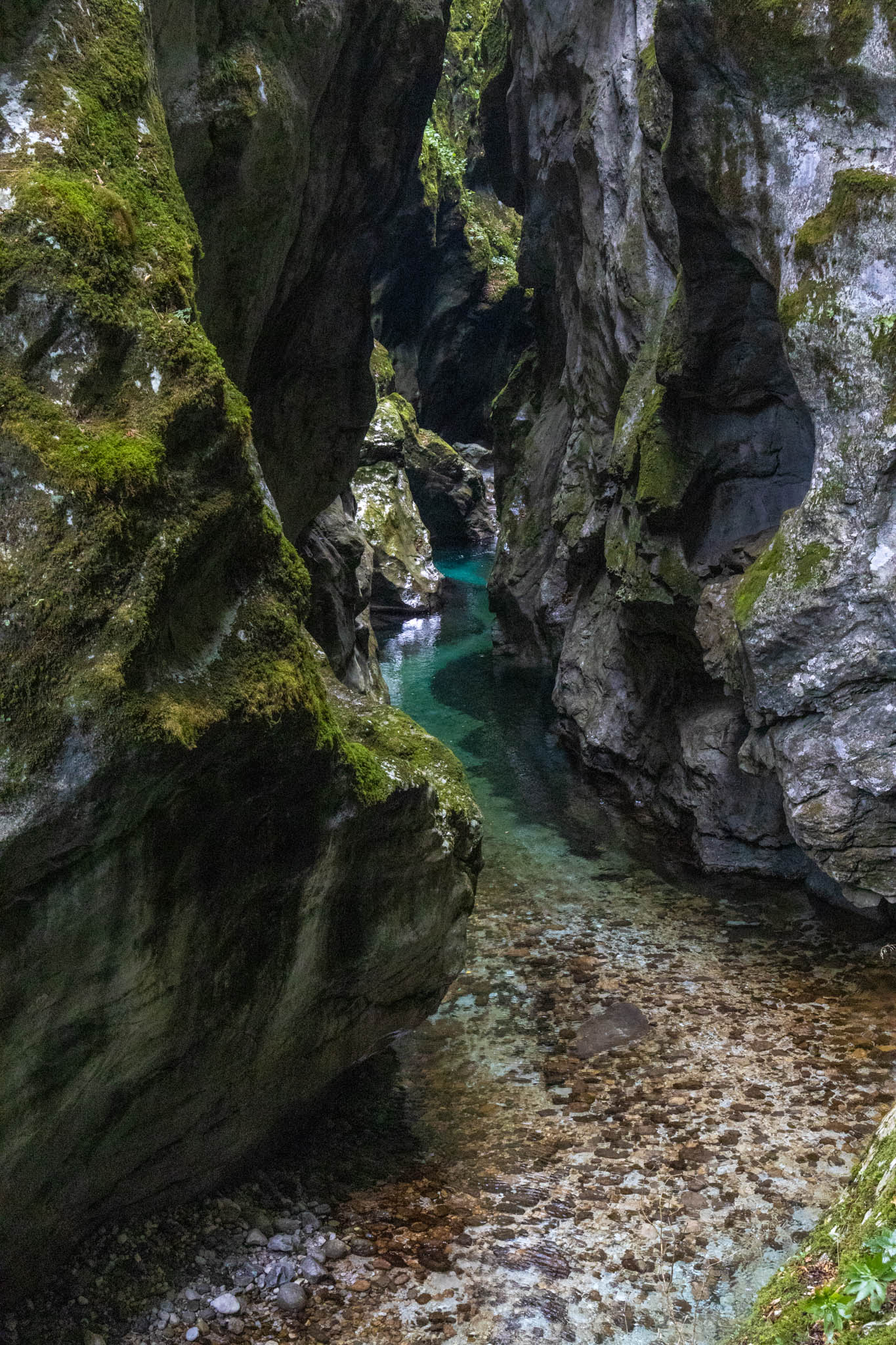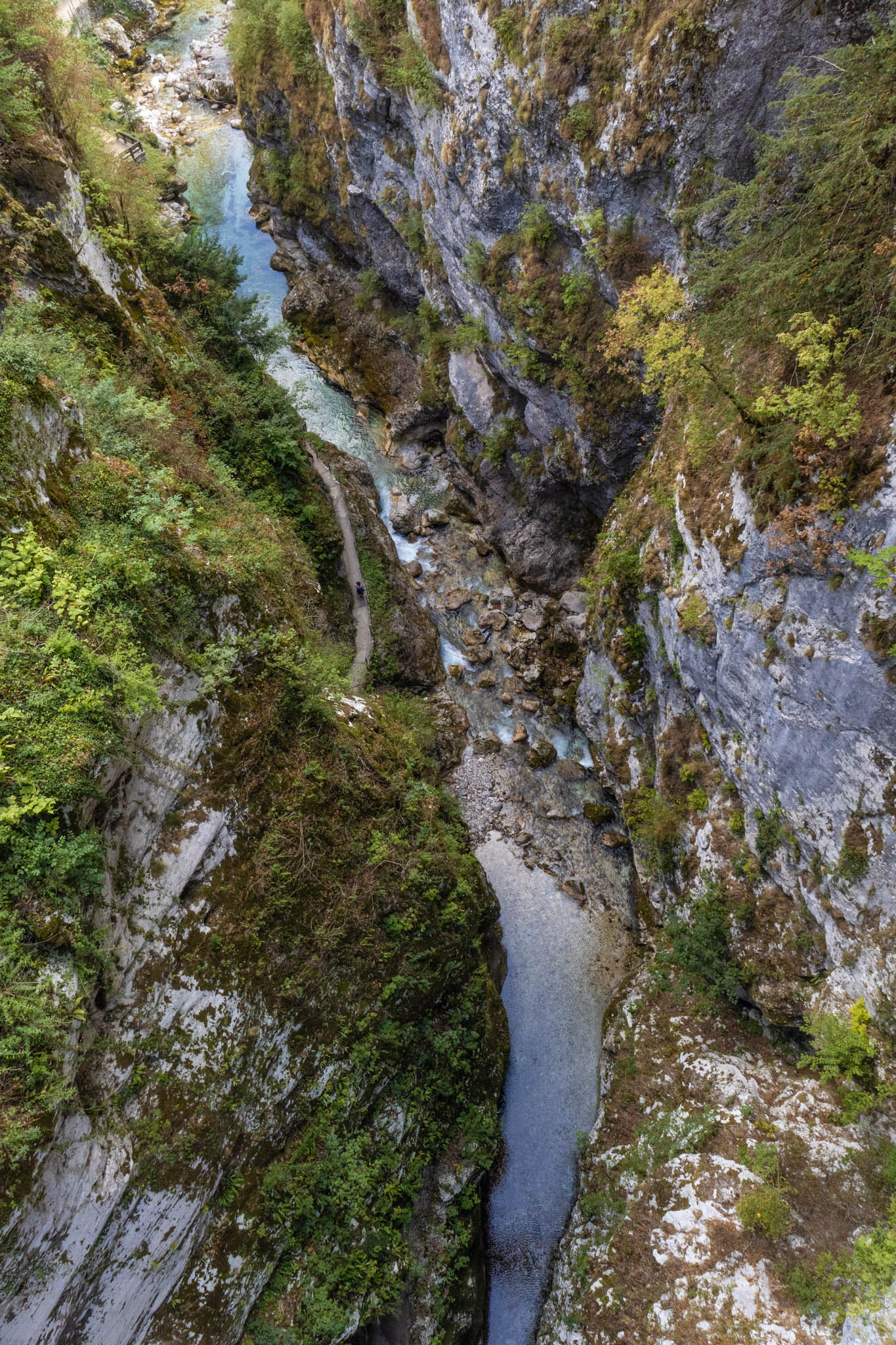This past week we visited Slovenia, or SLO as it is abbreviated on the license plates here. This felt very appropriate, as we were hoping for a restful few days after the big week of hiking we had in Austria. We stayed at a really lovely campsite in the Vipava Valley called Kamp David. It had a really local feel, as they had local wine and honey for sale, as well as some fresh fruit from the neighbouring orchard. My favourite part, though, was the bread. As it turns out, having fresh bread available to order is a basic requirement at European campsites. I remember reading a Park4Night review early on which gave a very low rating to a campsite because they did not have bread available, which I thought was odd. However, all of the campsites we’ve been to in the past four or five countries have had bread available to order. Kamp David’s was by far the best we’ve had! The “bread with seeds” was so fresh and delicious, we ended up eating most of it plain!
Since we were in the valley, we were back to 30+ degrees Celsius every day. It did cool down a bit more at night, but not until 11pm or even later, so we did not sleep very well this week. Even though it was quite hot, it was also a bit stormy, as we had thunderstorms multiple times during the week. The biggest was on Thursday night and Friday morning. We saw 30mm of rain predicted overnight starting around midnight, and we thought we’d stay up to do a bit of storm watching (since we were up late anyways due to the heat). We dozed off a bit while we waited, but once the storm got going, boy was it loud! There was pouring rain and wind, with more lightning than I’ve probably ever seen in a storm. Since thunderstorms are so rare in B.C., I get pretty excited every time we see one, but I think Jacob is getting a bit tired of me waking him up in the night to watch the storm with me!
Backing up a little bit in the week, on Tuesday we went to see the Tolmin Gorges. This is a paid-access park with a set of trails to explore the area, featuring deep gorges, interesting rock formations and lush surroundings. The Tolminka and Zadlaščica rivers formed the gorges, and they converge in this park. The colour of the water in some sections of the gorge was incredible, particularly at the thermal spring. It was such a rich turquoise, and contrasted so beautifully with the dark, jagged rocks around it.
 Thermal spring at Tolmin Gorges
Thermal spring at Tolmin Gorges
There was also a bridge 60m above the river, which gave stunning views down into the gorge and across the valley. When we first arrived, a thunderstorm had just passed over, so everything was damp and a bit cooler. By the time we’d finished walking around, it was hot and humid again, so we were good and ready to head back to camp for an ice cream!
 Birds-eye view of the gorges, as seen from the “Devil’s Bridge” (Hudičev Most)
Birds-eye view of the gorges, as seen from the “Devil’s Bridge” (Hudičev Most)
We’d driven to the Tolmin Gorges, so Jacob got a good taste of driving in Slovenia. Hence why we are interrupting this program to bring you a special report from Jacob on Slovenian speed limits:
Most places I have driven, I’ve managed to get the hang of the speed limits quickly - just need to get used to spotting (for example) the different style of start/end town signs. Not so in Slovenia. It feels as though the transport agency was given a handful of speed limit signs and they just put them up wherever they felt like.
As an example, if you followed the speed limit signs you end up with asymmetric speed limits, with (in one case) one direction having a limit of 40km/h and the other direction having a limit of 90km/h. In this case it looked like the 40km/h limit was for a roundabout (because the limit was 10m before the roundabout), and you could argue that it was obvious that you should just resume speed up to the limit of the road, but it wasn’t always clear what the speed limit was for.
As another example, there was a 50km/h limit sign and then a windy road for about 10 minutes of driving. I (and other tourist cars) assumed that this applied for the entire length of the windy road but it wasn’t entirely clear. In the UK or France you would have had at least 10 speed limit repeaters. The Slovenians just seemed to drive at the speed that they wanted and just slowed down for the speed cameras.
And now, back to our regularly scheduled program! Wednesday was the nicest day, weather-wise - no thunderstorms! - so after a relaxed morning, we hopped on our bikes in search of a swimming spot along the Vipava River. After a thankfully short section along the road, we hopped onto a gravel trail that follows the direction of the river. The trail weaves through the valley and past farms and vineyards, which was the perfect vibe on a hot summer’s day. We also passed several brightly-coloured beehives (like the one pictured at the top of this post), which inspired me to pick up some local honey from the campsite shop. As we cycled along the first few river-adjacent sections of the trail, we became increasingly worried that we wouldn’t find a suitable swimming spot, because the water was so low. Being the Internet-dependent millennials we are, Jacob checked Google Maps and found a certified local swimming hole a few kilometres down the path, so we soldiered on through the heat. I had imagined us jumping in and swimming around for a while, but given the temperature of the river, it ended up being more of a quick dip! It was lovely and refreshing, though, since by that time we were pretty sweaty.
 Cycling in the Vipava Valley
Cycling in the Vipava Valley
We also cycled through a small town with narrow, winding streets, stone bridges and cobbled roads. It was very quiet (on a weekday afternoon) and it felt special to see what small-town Slovenia looked like, given we’d likely never take the van there. We’ve been really grateful to have our bikes with us on this trip for that reason - often cycling is the best way to get around, once we have the van situated. Our time in Slovenia also has me really excited for cycle touring in Europe, since we saw so many people at the campsite touring on their bikes. We looked up some routes, and it looks like Slovenia, France, Italy and many other countries are full of excellent cycle tours! Seems like a great way to spend some of our vacation time next year.
Thursday’s forecast was for rain most of the day, so we decided to head underground! Škocjan Caves, a UNESCO world heritage site, is a system of caves formed by the Reka river. When we arrived, it was not yet raining, and I figured since we’d be underground I didn’t need to bother bringing a rain jacket (although I did pack a hoody for warmth). As it turned out, the tour did not start at the cave entrance, but rather a ten minute walk up the road at the reception centre. As we followed along behind our tour guide, the heavens opened and it began to pour. The heavy winds, thunder and lightning started soon thereafter! Jacob is both smart and kind, so he had a rain jacket with him and let me share its protection as we held it aloft above our heads. Even so, we were pretty damp by the time we arrived, but we soon forgot our discomfort as we entered the magical world of the caves. There were three distinct areas that we explored: during the guided portion, we were in the Silent Cave (“Tiha jama”) and the Murmuring Cave (“Šumeča jama”), and the self-guided portion at the end took us through the Big and Little Collapse Dolines (which I am counting as one area because I didn’t notice much of a distinction between the two).
The river no longer runs through the Silent Cave (hence the name) but it is full of stalactites and stalagmites, ranging in size from a few centimentres to the Giant (“Orjak”), a towering stalagmite which nearly reaches the ceiling of the Great Hall. It was damp, cool and dark inside the caves, composed of rock and mineral, but it felt very alive to me. There was such a variety of stalactite formations (our tour guide encouraged us to see creatures and shapes in our imaginations, as you might do with clouds) and they covered every inch of our surroundings. The tour guide told us that the stalactites grow approximately 1cm per 100 years, and showed us which colours indicated new and current growth, so it felt as though we were seeing history unfold in this relatively untouched environment.
The next part of the caves, the Murmuring Cave, is where the Reka river flows. This section is 3.5km long (just over half the length of the whole cave system), between 10m and 60m wide and over 100m high, all underground! It is one of the largest underground canyons in Europe, and was awe-inspiring to behold. It immediately reminded me of the mines of Moria (Khazad-dûm) from the Lord of the Rings (nerd alert!) and even had the remains of its own stone bridge over the chasm. Apparently there was an old tourist path through the caves used in the late 1800s / early 1900s, but it was mostly washed out when the river flooded the cavern. During our visit, the river was quite low, but there was a marker to show how high it had flooded one year, and it was mind-boggling to imagine that much water rushing through! Higher up on the walls of the cave we also saw old via ferratas (climbing routes with metal cables and footholds) used by early explorers of the caves.
I was sad to leave the caves and our excellent tour guide behind, but the final area to explore was a self-guided path around the collapse dolines, which is an area that used to be an enclosed cave, but the roof caved in, so it’s now a large canyon. After the cool darkness of the caves, it was a bit of an adjustment to enter the humid, lush and sunny environment outside. There were a few smaller caves to explore as well, but none as spectacular as the first two. We weren’t allowed to take photos during the guided portion of the tour, so hopefully I have done an adequate job of describing what we saw, although nothing can come close to the experience of visiting! This was definitely the highlight of our time in Slovenia for me.
 A waterfall in the Big Collapse Doline at Škocjan Caves
A waterfall in the Big Collapse Doline at Škocjan Caves
On Friday it was time to pack up again and head to one of our featured destinations of this trip: the Italian Dolomites! Stay tuned for a week of hiking and incredible views!
